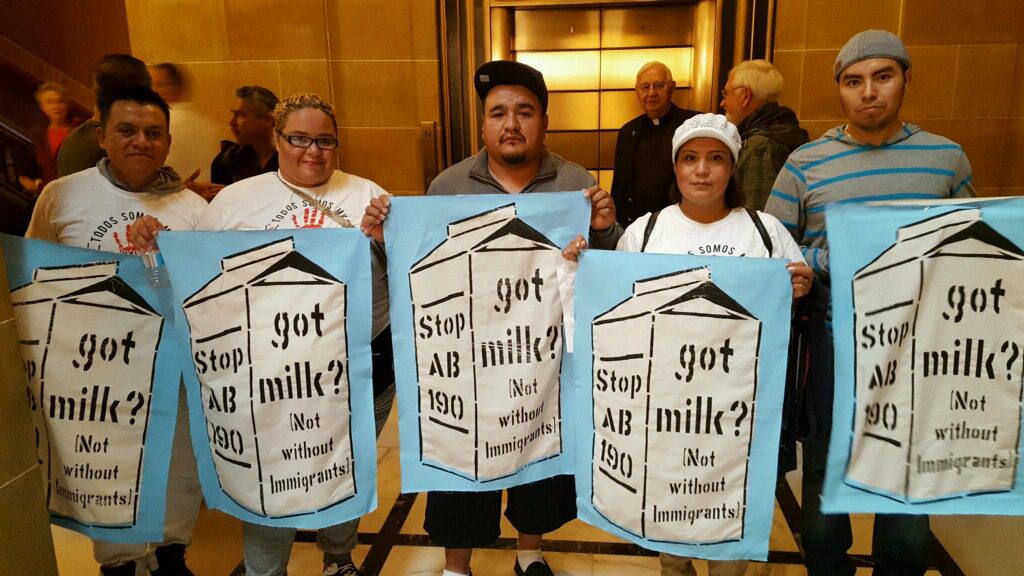Why not give lawmakers a space to hash out their differences, not as a one-shot game, but something they can come back to every now and again?
By: Anthony Pahnke, FFD Vice President
Originally Published by Common Dreams 5/19/2023

It seems that the anticipated humanitarian crisis of thousands of migrants streaming across the border, which many predicted with the end of the Title 42 program, has been avoided.
Still, something like 12 million undocumented people currently live in the United States, and we are probably just one migrant caravan away from having scores of families forced to live in squalor in border cities and perhaps being subject to violence at the hands of border agents.
Making matters worse, no recently proposed legislation concerning immigration has much chance of becoming law.
It’s the design of the Farm Bill that we should focus on. Its form, not its content.
For instance, the 2021 US Citizenship Act, which Biden championed early in his term and that would have created a pathway to citizenship for undocumented people, ran aground quickly last term due to GOP opposition. Now, Republicans have their own version of revamping our immigration system with the Secure the Border Act. This bill, which calls for hiring more border agents, as well as championing some Trump-era initiatives like building a physical border wall, has no path out of the Democrat-controlled Senate.
So, is there any hope of getting beyond our seemingly never-ending policy quagmire that is immigration reform?
The Farm Bill is where our leaders should turn.
The point is not to add some provision about immigration to this omnibus piece of legislation that governs most facets of our agricultural system.
Instead, it’s the design of the Farm Bill that we should focus on. Its form, not its content.
By form, what’s key is that the Farm Bill comes up for debate every five years. The expiration date is even written into the law.
The legislation’s design poses quite the task, as the Farm Bill sets the terms for most of the critical elements of the U.S. food system, from commodity prices and conservation policy to international trade and farm credit.
But that’s the bill’s genius—with such serious issues to debate, it makes sense to revisit them every now and again. And here’s the best part—if one party misses something, then they can try again next time.
That much was behind the bill’s creation. Before becoming law in 1933, for most of the 1920s, politicians fought over how to address the economic crisis ravaging farmers. While farmers did well during World War I, they struggled once the conflict was over. In response, some legislators wanted protectionist policies, others believed promoting exports was the answer. They couldn’t find middle ground and our nation’s food producers suffered for years.
So, what happened? When FDR became president, farmer groups and politicians created an omnibus bill that contained sections dealing with the issues that were the subject of debate years before and that required periodic renewal. The bill itself has come to include new sections from time to time, such as rural development and food assistance in the 1970s.
Agriculture aside, doesn’t such a way of addressing complicated policy matters, such as migration, make sense?
Think about it—who could have foretold when early in Biden’s term, when he sent Vice President Kamala Harris to Central America to search out ways to keep people from fleeing poverty, that Cubans and Venezuelans would eventually join the exodus of people? Or that Russia would invade Ukraine, sending millions seeking safe haven abroad?
Furthermore, historically, we see that migrants come to the U.S. in waves. Such moments are related to all kinds of unexpected events, including wars, famines, and natural disasters.
Comprehensive immigration reform has evaded our lawmakers for decades. So, it would make sense to take some of the pressure off of them and at least create a framework that they can work with.
There is no crystal ball that we can peer into and see where in the works some disaster will take place. The best we can do as a country is to craft a bill that provides parameters within which our legislators can debate every five years or so. Furthermore, all the major issues currently raging now could be found—border security, temporary protected status for people who are temporarily displaced, visas for students and workers, and so on.
A majority of Americans agree that something has to be done about immigration. Our parties also agree—this much is seen in how regularly their policy proposals come up in the news.
So, why not give them a space to hash out their differences, not as a one-shot game, but something they can come back to every now and again?
Let’s also not forget the migrants in this discussion. Now we are talking about Title 42 and Venezuelans, but in a year or two, it will be some other policy and another group of people. What is certain is that for quite some time, people will want to come to the US to work and live.
Comprehensive immigration reform has evaded our lawmakers for decades. So, it would make sense to take some of the pressure off of them and at least create a framework that they can work with. Both parties could also take credit for promoting it. And who knows, maybe they will compromise once in a while. They do so already with Farm Bill. Maybe the same could happen with immigration.
